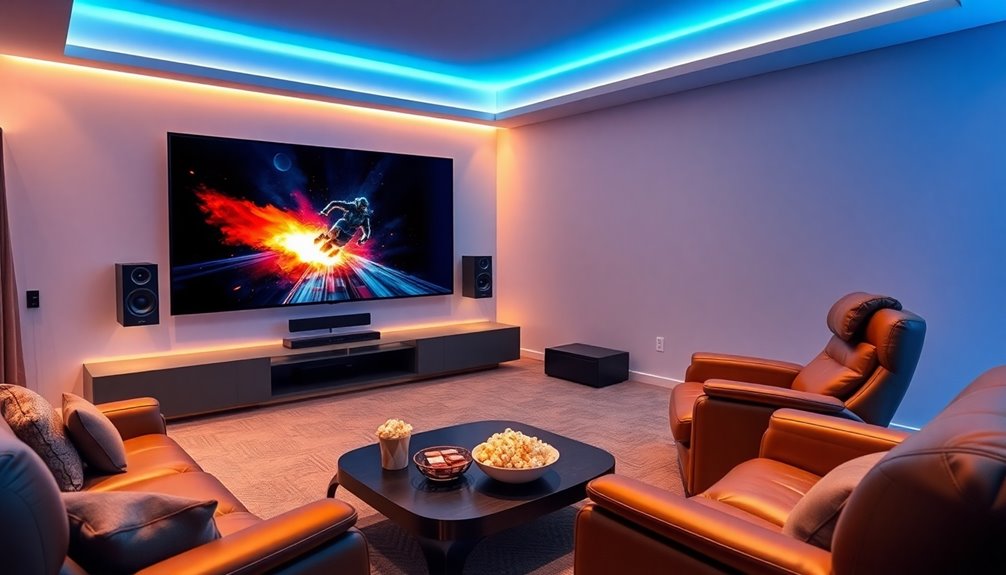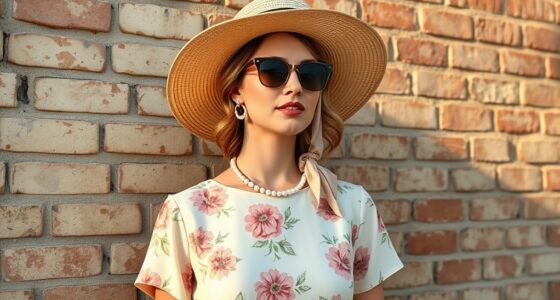If you're looking for stylish footwear brands that avoid pro-Israel stances, you'll want to explore options that align with your ethical values. Brands like Veja and Allbirds are known for their sustainable practices and transparency, ensuring your purchase makes a positive impact. TOMS emphasizes social responsibility, while Rothy's and Native Shoes focus on eco-friendly materials and ethical production. Don't overlook secondhand options; thrift stores and platforms like Thrifted and Depop can offer unique styles without compromising your principles. Ethical choices are out there; stay tuned to discover even more alternatives that resonate with your values.
Key Takeaways
- Consider ethical footwear brands like Veja and Allbirds, known for sustainable practices and transparency in production.
- TOMS offers a socially responsible alternative, focusing on community support and ethical practices.
- Explore local independent shoemakers to find unique styles and support ethical production within your community.
- Secondhand shopping through platforms like Thrifted and Depop provides distinctive footwear options while promoting sustainability.
- Look for brands committed to fair labor practices and eco-friendly materials to align purchases with ethical values.
Overview of Ethical Consumerism
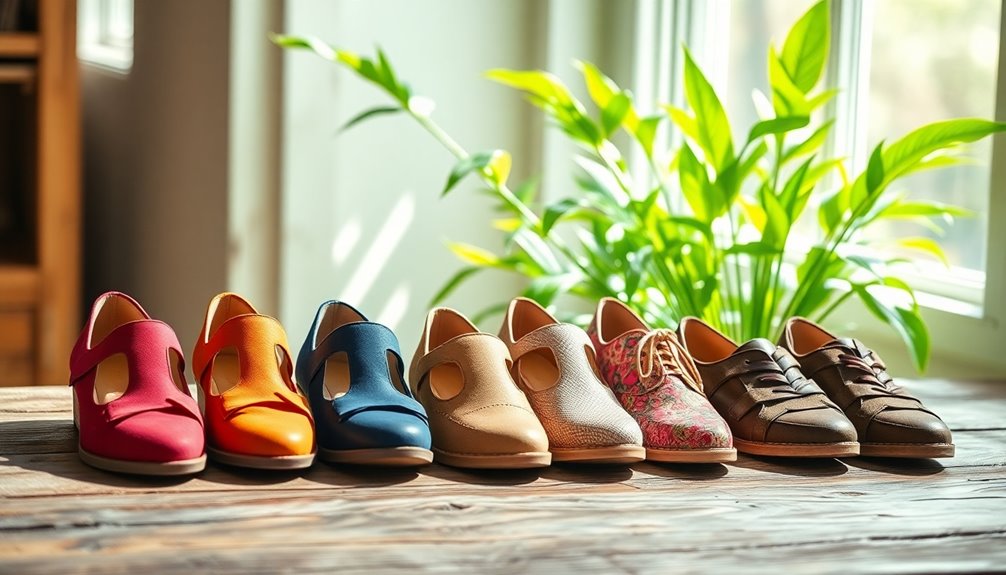
Ethical consumerism is more than just a trend; it's a movement that encourages you to reflect on the impact of your purchases. By choosing to support brands that prioritize ethical practices, like fair labor conditions and environmental sustainability, you play a vital role in fostering a more just world.
This approach not only benefits society but also encourages companies to adopt responsible practices.
Since the inception of the Boycott, Divestment and Sanctions (BDS) movement in 2005, awareness has grown around brands that contribute to human rights violations. You'll find that ethical alternatives to these boycotted brands often exist, typically involving less complicity in social and environmental issues.
This shift appeals to conscious consumers like you who care about their choices.
The rising demand for ethical options has also spotlighted independent businesses and secondhand markets, which frequently offer more sustainable, socially responsible choices.
Subscribing to platforms like Ethical Consumer can further empower you by providing thorough research on brand ethics. This helps you make informed decisions that truly align with your values, ensuring your spending reflects your commitment to ethical living.
Shoe Brands Under Scrutiny
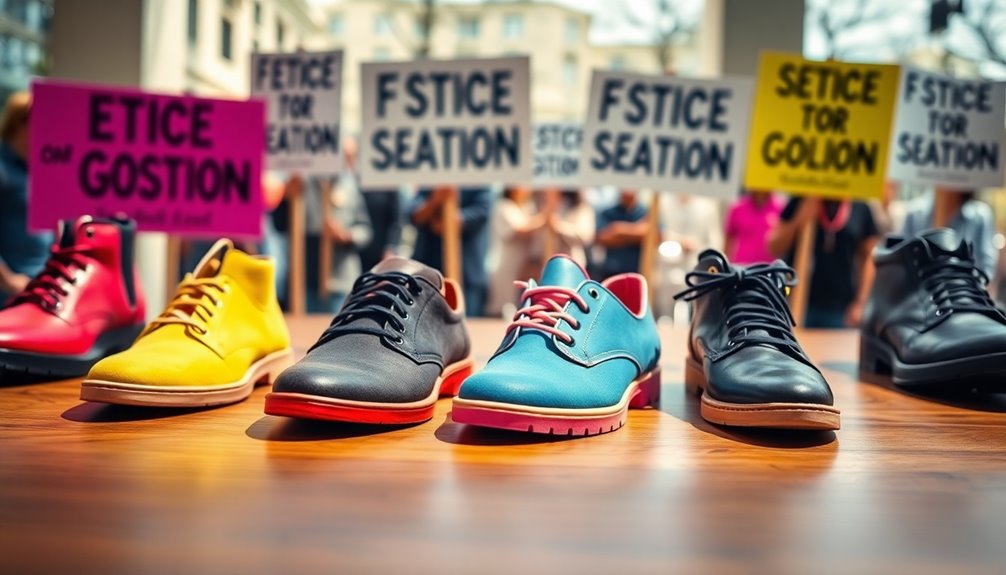
You might be surprised to learn that some popular shoe brands are facing scrutiny over their sourcing practices and ties to controversial political stances.
As consumers, you're increasingly looking for alternatives that prioritize ethical production and sustainability.
Brands like Veja, Allbirds, and TOMS offer viable options that align better with your values.
Ethical Sourcing Practices
As consumers become increasingly aware of the impact their purchases have on global issues, many shoe brands are facing heightened scrutiny over their sourcing practices. You may have noticed that brands like Nike and Adidas are often called out for their ties to companies involved in human rights violations, particularly concerning the Israeli-Palestinian conflict. This has sparked a movement toward ethical consumerism, with many people choosing to boycott these brands.
Ethical sourcing practices emphasize transparency in supply chains, ensuring that materials and labor are acquired without contributing to human rights abuses or environmental degradation. When you support brands that prioritize ethical practices, you're not just making a fashionable choice; you're promoting better labor standards and responsible sourcing.
Consider brands like Veja, Allbirds, and TOMS, which focus on sustainable materials and fair labor practices. By opting for these alternatives, you help encourage broader industry changes that benefit workers and the planet.
It's essential to align your purchasing power with your values, fostering a market where ethical sourcing becomes the norm rather than the exception. Your choices can drive meaningful change in how footwear is produced and sourced globally.
#
Alternatives to Popular Brands
Many consumers are seeking alternatives to popular shoe brands under scrutiny for their ties to controversial practices, especially regarding the Israeli-Palestinian conflict. Brands like Nike, Adidas, and Puma have faced backlash for their perceived complicity in human rights violations, prompting many to look for more ethical choices. Research indicates potential psychological benefits of aligning purchases with personal values, which can enhance overall satisfaction and well-being. Additionally, adopting a growth mindset can help consumers feel empowered in their purchasing decisions.
Consider exploring brands like Veja, Allbirds, and TOMS. These companies prioritize sustainable practices and social responsibility, ensuring your purchases align with your values. Additionally, incorporating elements like vibrant colors into your wardrobe can enhance your overall aesthetic while supporting ethical fashion.
Secondhand or refurbished footwear is another excellent option, as it reduces waste and often comes from brands with better ethical ratings. This supports the growing trend of community-focused shopping that many consumers now embrace.
Don't forget about supporting local independent shoe retailers. They typically have fewer ties to controversial practices associated with larger corporations, offering more ethical choices.
Additionally, subscription services and platforms that focus on ethical fashion can help you discover new brands that resonate with your beliefs. By participating in such initiatives, you contribute to the growth in digital platforms that prioritize ethical consumerism and sustainable practices.
Sustainable Footwear Options
The scrutiny surrounding popular shoe brands has intensified as consumers become more aware of their ties to controversial practices, particularly regarding the Israeli-Palestinian conflict.
With brands like Nike and Adidas facing backlash for their complicity in human rights violations, many ethical consumers are actively seeking sustainable footwear options that align with their values.
Here are some brands you might consider:
- Veja – Known for its eco-friendly materials and fair trade practices.
- Allbirds – Focuses on sustainable materials and carbon-neutral production.
- Native Shoes – Offers lightweight, vegan options with a commitment to reducing waste.
- Secondhand Shopping – Thrift stores and online platforms provide an eco-conscious way to shop while avoiding controversial brands.
As awareness of ethical consumerism grows, so does the demand for shoes that reflect your values. Furthermore, the reliance on secure payment processing in e-commerce ensures that consumers can confidently make purchases from these ethical brands. Additionally, many consumers are now considering performance upgrades similar to those seen in automotive tuning, which enhances the longevity and functionality of their footwear.
In addition, the importance of supporting Indigenous artisans through platforms like Indigenous Gift Shop highlights the potential for ethical consumerism to promote cultural awareness and economic empowerment.
By choosing brands that prioritize transparency and sustainability, you not only make a stylish choice but also contribute to a more ethical marketplace.
Embrace these options, and feel good about the footwear you wear!
## Alternatives to Popular Brands
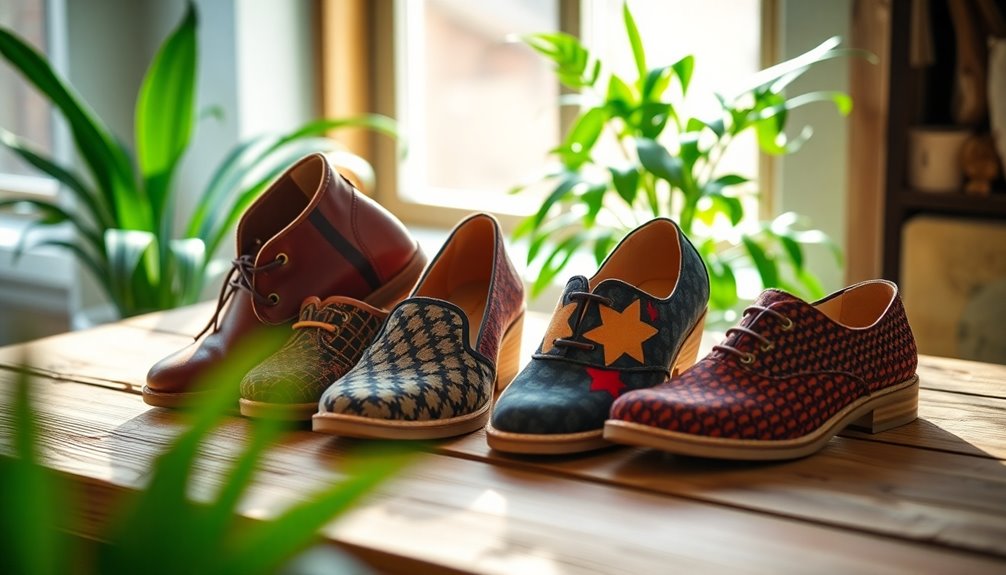
If you're looking to make a change in your footwear choices, there are plenty of ethical and sustainable options out there.
Brands like Veja and Allbirds focus on eco-friendly practices, while local independent shoemakers often provide unique styles that align with your values.
Exploring secondhand shops can also help you find great shoes while reducing your environmental impact.
Ethical Footwear Options
Finding ethical footwear options has become essential for consumers who want to align their purchases with their values.
With many popular brands like Nike and Adidas facing criticism for their ties to Israeli military contracts, it's time to explore alternatives that prioritize ethics and sustainability.
Here are some great options to contemplate:
- Veja: Known for its sustainable practices and transparent production methods, Veja offers stylish sneakers that don't compromise your values.
- Toms: This brand focuses on social responsibility, giving back to communities, and promoting ethical practices in their production.
- Secondhand Stores: Purchasing from secondhand or refurbished footwear shops not only reduces complicity in human rights violations but also promotes sustainability.
- Local Independent Retailers: Supporting local shoe shops often provides better ethical choices, benefiting community economies and encouraging sustainable practices.
You can also turn to resources like Ethical Consumer, which offers extensive research and ratings on various footwear brands.
Sustainable Brand Alternatives
As consumers become more aware of the impact their purchases have on global issues, many are seeking sustainable brand alternatives to popular footwear companies. You can find stylish options from brands like Veja and Allbirds, which prioritize human rights and environmental responsibility.
These companies not only offer fashionable footwear but also guarantee their production processes align with ethical practices.
Consider Toms and Rothy's, which provide chic designs while committing to responsible manufacturing. By choosing these brands, you're supporting companies that actively work against human rights violations.
If you're interested in even more ethical options, secondhand shopping is a fantastic route. Platforms like Thrifted and Depop allow you to discover unique styles while minimizing waste and avoiding brands with questionable ethics.
Many ethical footwear brands boast transparent supply chains, empowering you to make informed choices about your purchases.
Local Independent Shoemakers
Local independent shoemakers offer an invigorating alternative to mass-produced footwear, often prioritizing ethical and sustainable practices.
By choosing to support these artisans, you not only get unique and stylish shoes but also contribute to a more responsible fashion industry.
Here are four key reasons to contemplate local independent shoemakers:
- Ethical Production: Independent shoemakers often focus on reducing reliance on large brands known for human rights violations, ensuring your footwear is made ethically.
- Sustainable Materials: Many of these brands use eco-friendly materials and fair labor practices, positively impacting both the environment and local economies.
- Community Engagement: Supporting local shoemakers fosters a sense of community and helps preserve traditional craftsmanship that mass production threatens to erase.
- Lower Carbon Footprint: With shorter supply chains, buying from independent brands typically results in a lower carbon footprint compared to popular global brands.
As more consumers seek ethical alternatives, local independent shoemakers are emerging as leaders in this movement, often scoring higher in ethical ratings than mainstream competitors.
Your choices can drive change, making a difference one step at a time.
Sustainable Footwear Choices
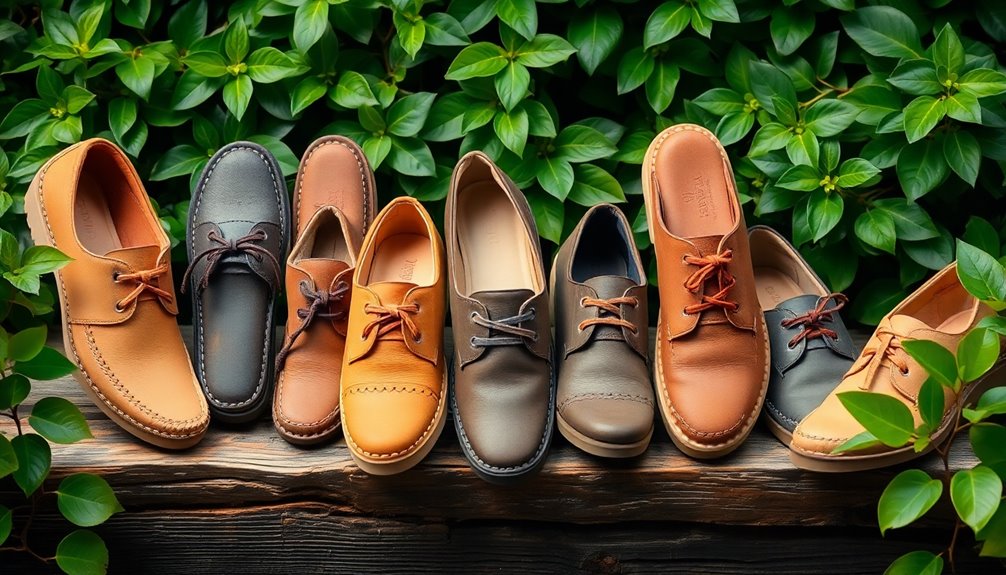
When you choose sustainable footwear, you're not just making a fashion statement; you're also contributing to a healthier planet. Sustainable footwear options prioritize eco-friendly materials, which greatly reduce the environmental impact associated with traditional shoe manufacturing.
Many brands focus on ethical production practices, using recycled materials, organic cotton, and sustainable leather alternatives to craft stylish and functional footwear.
Moreover, these brands often emphasize fair labor practices, ensuring workers receive fair wages and enjoy safe working conditions throughout the production process. By supporting sustainable footwear, you're also participating in a circular economy that extends the life cycle of products through repair, recycling, and responsible disposal practices.
Additionally, the rise of secondhand and refurbished footwear options promotes sustainability by reducing waste in landfills and giving shoes a second life. In the same way that energy-efficient technology enhances sustainability in heating and cooling systems, sustainable footwear contributes to a reduced carbon footprint.
Embracing sustainable choices not only enhances your wardrobe but also aligns your values with a commitment to environmental responsibility. So, when you step out in those eco-friendly kicks, you're making a choice that benefits both your style and the planet.
Choose wisely, and let your footwear reflect your dedication to sustainability.
Supporting Ethical Manufacturers
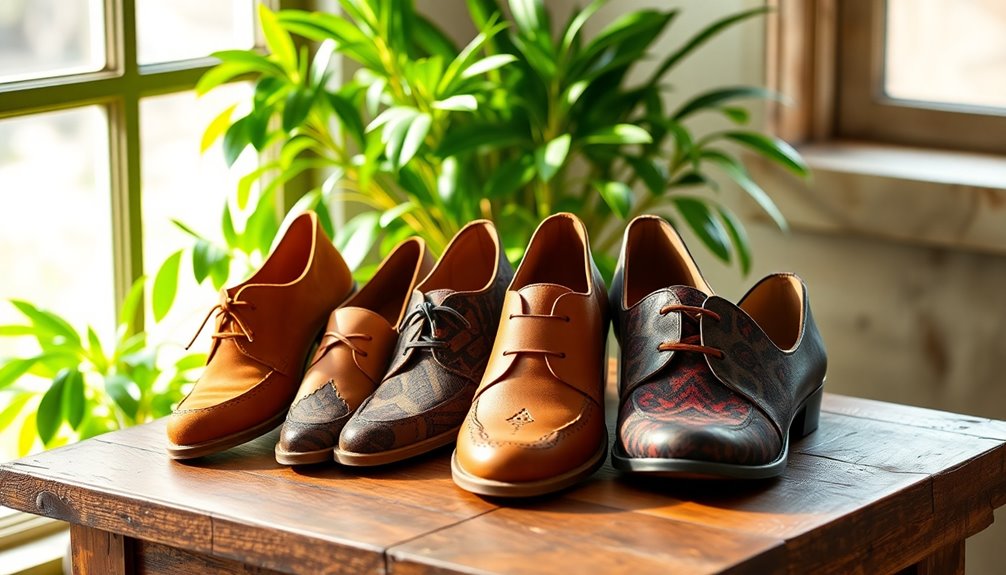
Supporting ethical manufacturers means making conscious choices that reflect your values in every step you take. By opting for brands that prioritize human rights, you can guarantee your purchases align with your ethical stance.
Many popular footwear brands have faced scrutiny for their ties to conflicts, so consider alternatives that uphold these values.
Here are some ways you can support ethical manufacturers:
- Choose Brands Wisely: Select companies like Veja, Allbirds, or Native Shoes that are committed to fair labor practices and sustainable materials.
- Explore Secondhand Options: Purchase refurbished or secondhand footwear to reduce waste and support a circular economy.
- Stay Informed: Use resources like Ethical Consumer to identify brands that aren't complicit in actions against Palestinian rights.
- Support Local: Whenever possible, opt for local or independent shoe manufacturers to minimize your impact on global supply chains and support community economies.
Local and Independent Brands
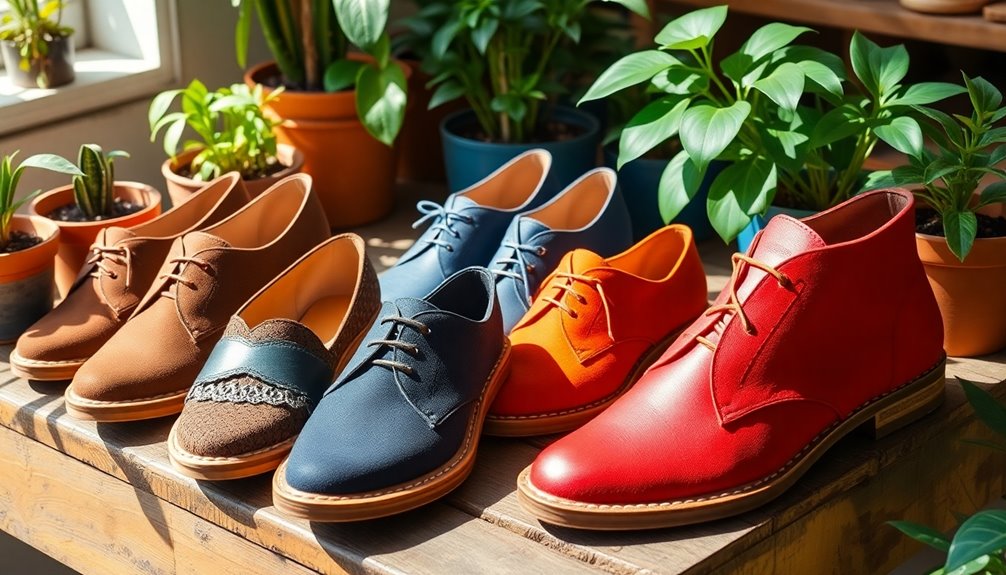
When you choose local and independent shoe brands, you're not just buying a product; you're supporting artisans who prioritize sustainable materials and ethical practices.
These brands often engage in community impact initiatives, which help strengthen local economies.
Supporting Local Artisans
Choosing to buy from local artisans and independent brands can make a significant impact on your community. When you support these creators, you're not just getting a product; you're investing in the local economy and helping to preserve unique craftsmanship.
Here's why it matters:
- Unique Products: Local artisans offer handcrafted items that reflect cultural heritage, setting them apart from mass-produced goods.
- Economic Boost: Your purchase keeps money circulating within the community, stimulating growth and fostering job creation.
- Lower Carbon Footprint: Independent brands often source materials nearby, which reduces transportation emissions and helps the environment.
- Community Connection: Engaging with local artisans allows you to learn their stories and processes, enhancing your shopping experience and deepening your connection to the community.
Sustainable Material Choices
In today's market, making sustainable material choices in footwear can have a profound impact on both the environment and the economy. When you opt for shoes made from organic cotton, recycled plastics, or natural rubber, you greatly reduce your environmental footprint while supporting ethical production practices.
Local independent brands often lead the charge in prioritizing sustainability and fair labor, offering unique styles that resonate with your values.
Investing in high-quality, durable shoes crafted from these sustainable materials not only benefits the planet but also saves you money in the long run. Unlike fast fashion alternatives that wear out quickly, these shoes are designed to last.
Brands like Veja and Allbirds are excellent examples, as they incorporate eco-friendly materials and maintain transparent supply chains, making them popular among conscious consumers.
Community Impact Initiatives
Through supporting local independent brands, you not only contribute to ethical consumption but also help invigorate your community's economy.
These businesses typically reinvest a larger portion of their revenue back into the area, fostering growth and sustainability. By choosing local, you embrace values that resonate with ethical consumerism. Moreover, supporting local brands can enhance critical thinking as they often provide educational opportunities through community engagement initiatives. Additionally, investing in local businesses can lead to a stronger retirement savings plan for community members as economic stability grows. Local brands may also incorporate sustainable practices that align with community values, ensuring a healthier environment for future generations. Many of these brands also embrace recycling methods to minimize waste and promote sustainability.
Here are some ways local brands make a difference:
- Sustainable Practices: Many local brands prioritize sustainability, sourcing materials ethically and ensuring fair labor practices.
- Community Partnerships: Independent brands often collaborate with local charities and environmental projects, amplifying their positive community impact.
- Support for Artisans: By sourcing from local artisans, these brands help preserve traditional crafts and promote local talent.
- Circular Economy: Opting for secondhand or refurbished products from local shops minimizes waste and supports sustainable practices.
Your choices as a consumer can lead to a thriving community with a shared commitment to social and environmental issues. Additionally, embracing self-care and mindfulness can enhance your overall well-being while making ethical choices.
Supporting local independent brands not only meets your style needs but also empowers your community, creating a ripple effect of positive change.
Highlighting Secondhand Options
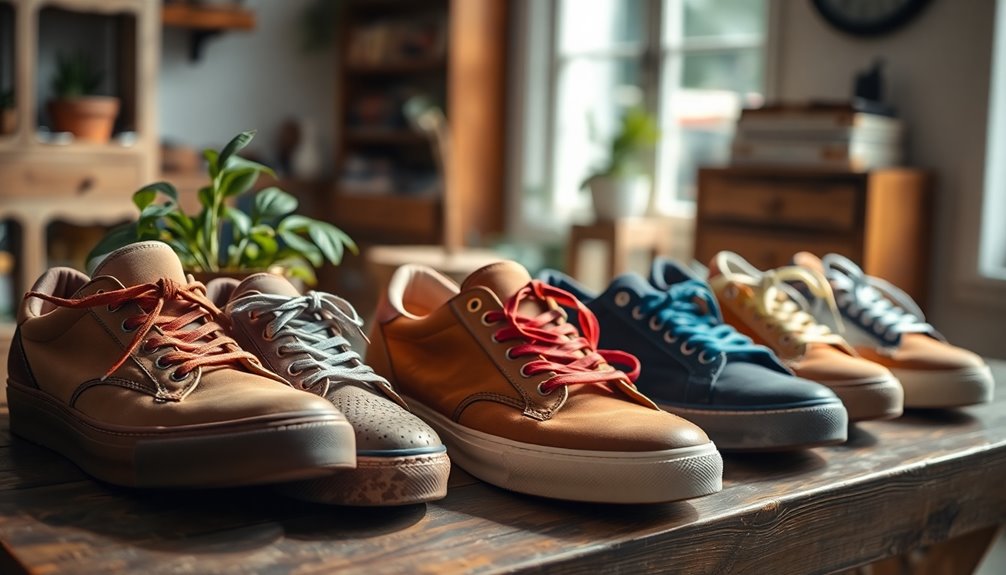
Secondhand shopping offers a stylish and sustainable alternative to mainstream footwear brands often criticized for unethical practices.
When you opt for secondhand shoes, you greatly reduce your environmental impact by extending the life cycle of products and minimizing waste. This choice aligns perfectly with your values as an ethical consumer.
Thrift stores and online platforms like Depop and Poshmark are treasure troves for stylish options that sidestep the issues tied to big brands, including their complicity in human rights violations.
By purchasing refurbished or pre-owned footwear, you not only save money but also make a positive statement about ethical consumption and sustainability.
Local independent thrift shops often curate unique collections of secondhand footwear, allowing you to find distinctive styles while supporting your community.
This approach helps you avoid supporting companies linked to unethical practices, particularly those involved in the Israeli-Palestinian conflict.
Transparency in Supply Chains
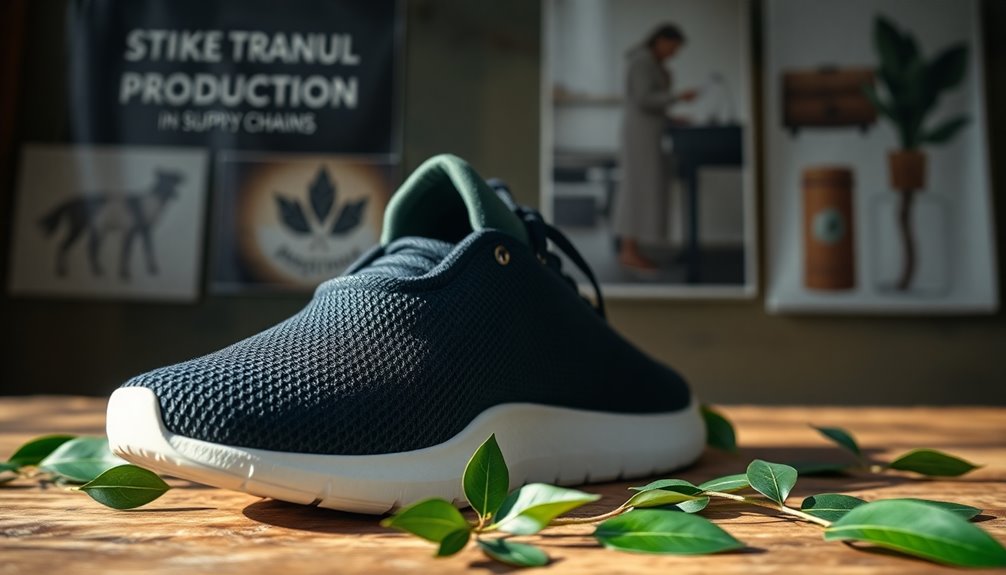
Transparency in supply chains is essential for ethical consumers who want to make informed choices about their purchases. By understanding where and how products are made, you can support brands that prioritize fair labor practices and avoid those involved in human rights violations.
Here are four key reasons why transparency matters:
- Trust and Accountability: Brands that disclose sourcing information foster consumer trust and demonstrate accountability in their practices. You can feel good about the brands you support.
- Informed Choices: Access to detailed sustainability reports helps you identify which companies align with your values, making it easier to choose ethical options.
- Consumer Demand: As more consumers seek ethical products, brands are responding by outlining their supply chain practices. Your purchasing power influences positive change in the market.
- BDS Movement: The Boycott, Divestment and Sanctions movement emphasizes the need for clear information regarding a brand's involvement in political and social issues, guiding you towards more responsible choices.
Community Support and Activism
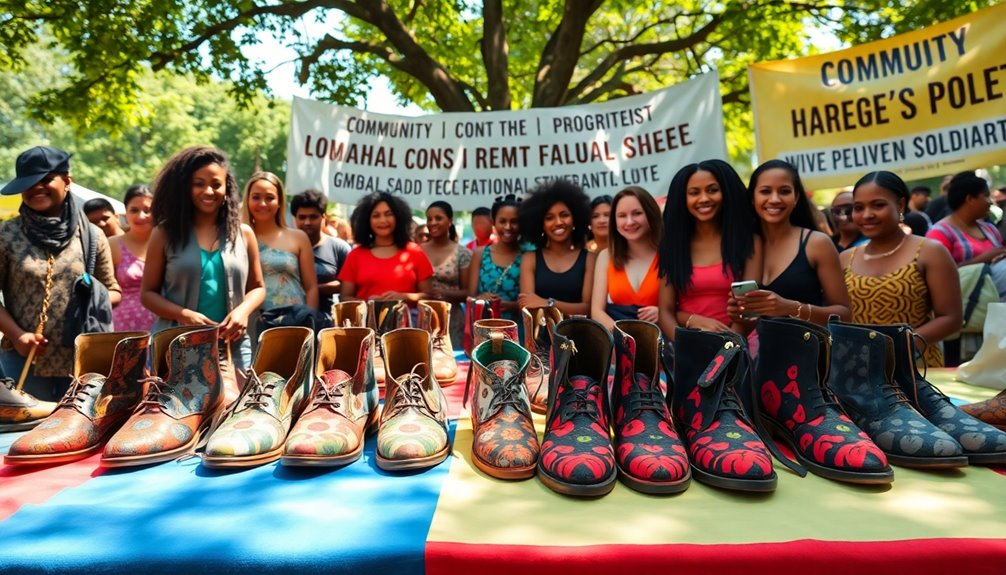
As consumers become more aware of ethical issues tied to their purchases, community support and activism are gaining momentum. Grassroots movements in the UK are organizing boycotts against brands linked to violations of Palestinian human rights, fostering solidarity among like-minded individuals. The Boycott, Divestment and Sanctions (BNC) campaign, launched in 2005, empowers communities to take collective action against companies profiting from such abuses.
Supporting local independent businesses is a key aspect of this movement. These businesses often provide more ethical choices, encouraging community engagement and economic support for responsible practices. Ethical consumerism is on the rise, with increasing demand for alternatives to brands associated with human rights violations.
Here's a quick look at how community support shapes activism:
| Action | Impact |
|---|---|
| Boycotts against unethical brands | Raises awareness and drives change |
| Promoting local businesses | Strengthens community and ethical practices |
| Sharing information from organizations | Informs consumers about ethical choices |
Regular updates from organizations like Ethical Consumer keep communities informed, enhancing the effectiveness of their activism. By making informed choices, you contribute to a larger movement toward ethical shopping.
Resources for Ethical Shopping

A wealth of resources is available for those looking to shop ethically, making it easier than ever to align your purchases with your values. Here are some practical tools to guide your ethical shopping journey:
- Ethical Consumer: This platform provides a wealth of information about brands, offering recommended alternatives that focus on lower-complicity options across various categories. Subscribers gain access to detailed ethical scoring, helping you make informed choices.
- Secondhand and Refurbished Products: Choosing these options promotes sustainability and reduces waste, making them a great ethical shopping choice. Look for local thrift stores or online marketplaces to find unique items.
- Support Local Independent Businesses: Opting for local shops often means better transparency and accountability. Independent businesses typically prioritize ethical practices over profit margins.
- Stay Informed: Subscribe to newsletters from Ethical Consumer for regular updates on campaigns and changes in brand practices. This continuous ethical awareness helps you stay aligned with your values as consumer landscapes evolve. Additionally, understanding investment diversification can enhance your financial stability as you make ethical choices in your purchasing habits.
Frequently Asked Questions
What Are the Key Principles of Ethical Consumerism?
When you're thinking about ethical consumerism, focus on a few key principles.
First, consider the impact of your purchases on people and the planet. You should seek out products that prioritize fair labor practices and sustainable sourcing.
Transparency is essential, so look for brands that openly share their practices.
Finally, support local businesses whenever possible, as this helps strengthen communities.
How Can I Identify Truly Ethical Shoe Brands?
To identify truly ethical shoe brands, start by researching their sourcing practices and labor conditions.
Look for certifications like Fair Trade or B Corp, which indicate commitment to ethical standards.
Check their environmental policies, too; brands that prioritize sustainability often have transparent supply chains.
Read customer reviews and seek out companies that actively support social causes.
It's also helpful to follow ethical fashion influencers for recommendations on brands that align with your values.
Are There Certifications for Ethical Footwear?
Yes, there are certifications for ethical footwear.
When you're shopping, look for labels like Fair Trade, Global Organic Textile Standard (GOTS), or B Corporation. These certifications indicate that brands meet specific social and environmental standards.
Additionally, you can check for memberships in organizations like the Ethical Trading Initiative.
How Do I Care for Sustainable Shoes?
Caring for your sustainable shoes is like nurturing a delicate plant; a little attention goes a long way.
Start by wiping off dirt with a damp cloth. For leather, use a gentle conditioner to keep it supple. Avoid harsh chemicals and extreme heat, which can damage materials.
Let them air dry after cleaning, and store them in a cool, dry spot.
With these simple steps, you'll keep your eco-friendly footwear looking great!
Can I Find Stylish Options for Children's Ethical Footwear?
Absolutely, you can find stylish options for children's ethical footwear!
Look for brands that prioritize sustainable materials and fair labor practices. Check out online retailers or local stores that specialize in eco-friendly products.
Many brands offer fun designs that appeal to kids while being conscious of the environment. Don't forget to read reviews and consider your child's comfort and style preferences.
You'll discover stylish choices that align with your values and their needs!
Conclusion
As you step into the world of ethical consumerism, you'll discover that your choices matter. Will you support brands that align with your values? The alternatives are out there, waiting for you to explore. Imagine slipping into stylish shoes that not only look good but do good, too. Each pair you choose can spark change. Will you take the leap? Embrace the journey of conscious shopping, and let your feet lead the way to a brighter, more ethical future.

